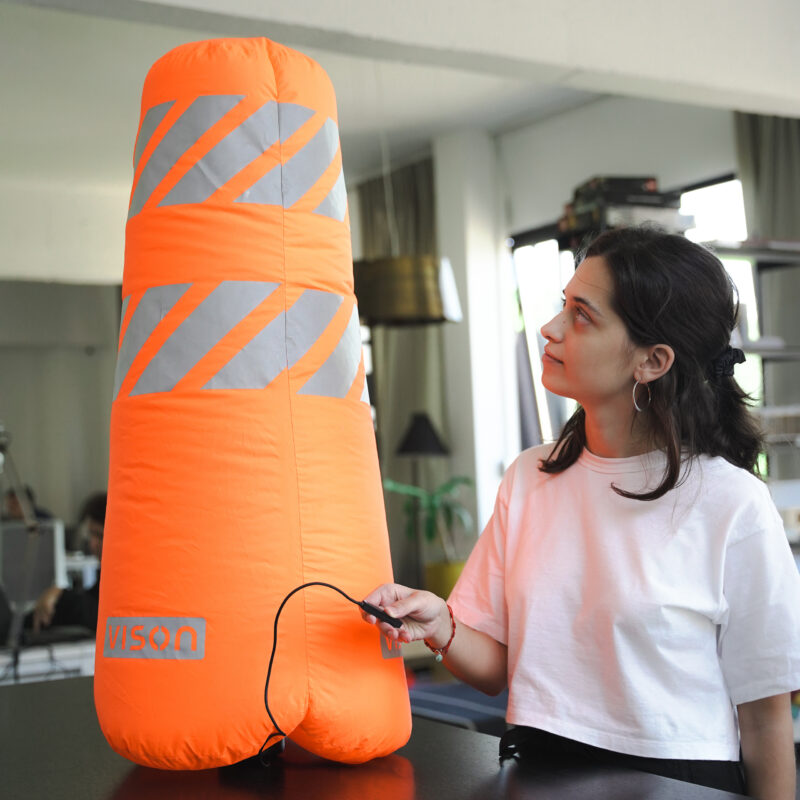Project
Vison
Case
Study
The spark of an idea.
One rainy night, an n-others designer found himself stranded on the shoulder of a busy highway, attempting to set up a traditional warning triangle. Standing dangerously close to passing traffic, he suddenly realized the irony: the tools meant to protect drivers during breakdowns were themselves putting lives at risk.
That roadside moment raised a critical question:
Couldn’t we design something safer?
From that idea, n-others committed fully to solving this challenge. What followed was a focused, multidisciplinary effort to rethink roadside safety from the ground up.
- Year2023
- Clientn-others
- PlaceBuenos Aires
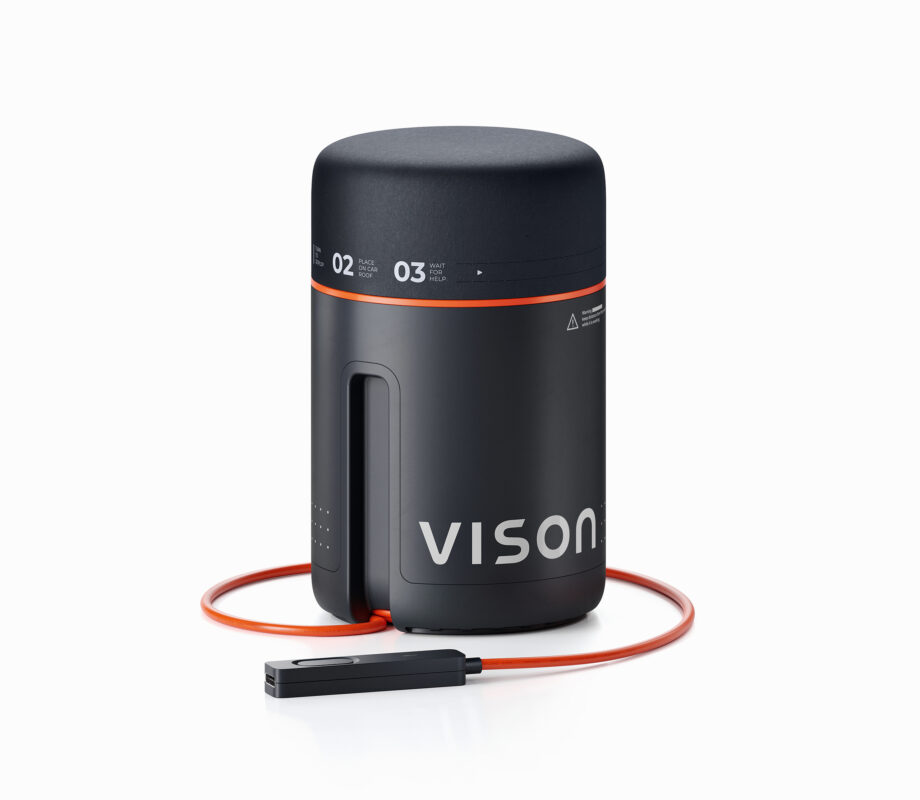
THE MISSION
Design a better response to roadside emergencies: something compact, intuitive, and genuinely useful. To get there, we’d rely on the full range of our studio’s capabilities, bringing mechanical design, electronics, and digital interaction together under one roof.
This wasn’t just about building a device, it was about designing a smarter, safer way to act under pressure.
1. Rethinking emergency signaling
A key challenge in designing this product is ensuring it comfortably accommodates up to four people for activities like brainstorming, group calls, and presentations.
The main focus has been to achieve the right balance between spaciousness and functionality—providing easy entry and exit, freedom of movement around seating, seamless device connectivity, all while preventing a cramped or enclosed feeling.
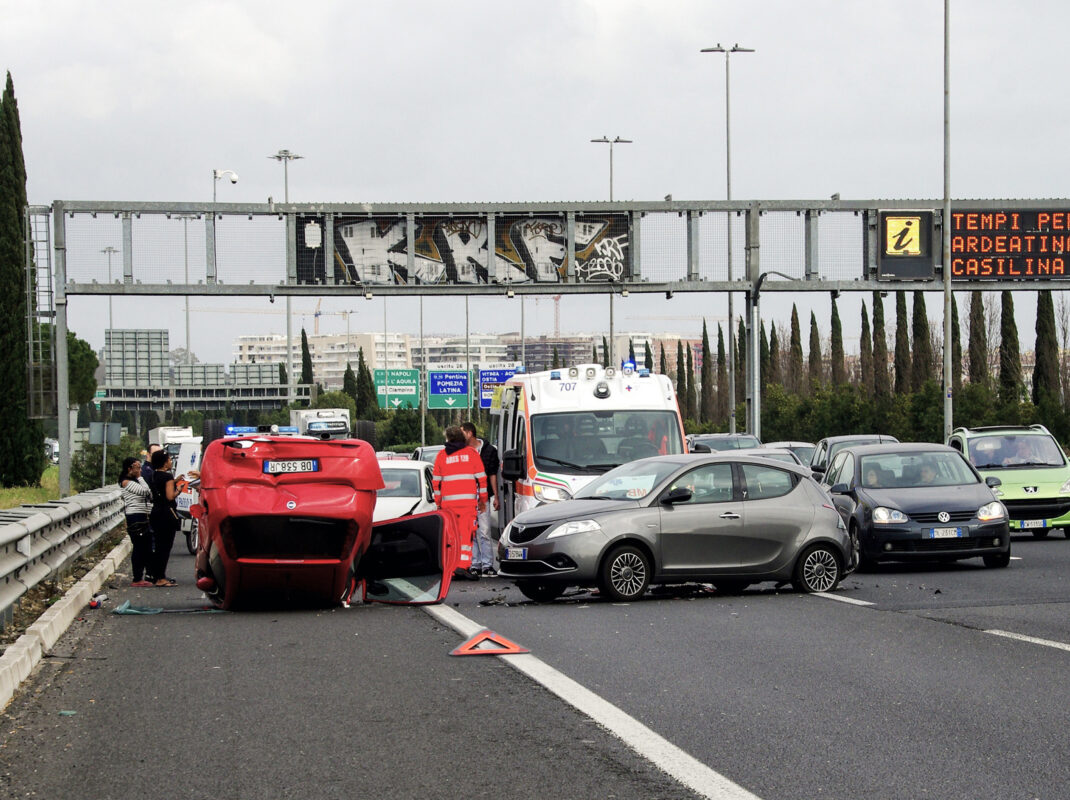
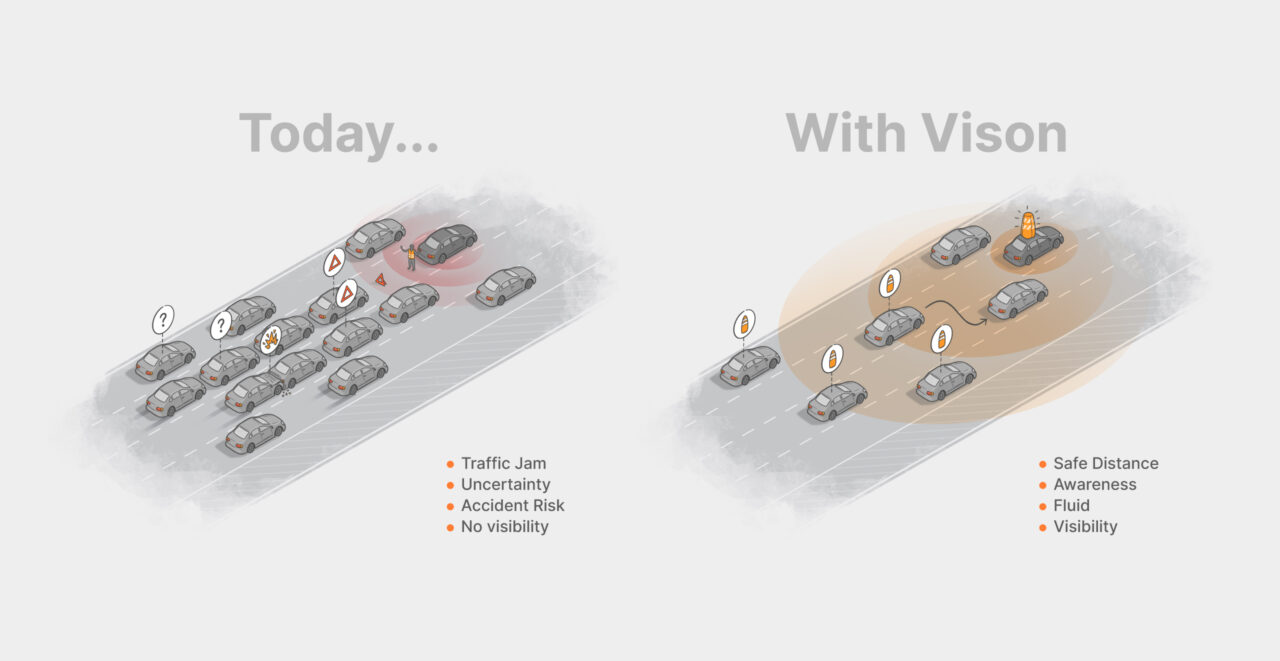
2. A Safer signal for roadside emergencies
From this insight came FLARE, an inflatable emergency beacon that redefines how we signal for help during a breakdown.
The design goal was ambitious but clear: create a warning device drivers could deploy without leaving their vehicles, maximizing visibility while minimizing risk.
It needed to be fast to activate, compact enough to store in a glove compartment, and easily noticeable. Even in harsh weather, low light, or broad daylight. Unlike traditional static tools, FLARE’s inflatable form provides vertical visibility, making it significantly easier for oncoming drivers to spot from a distance in any condition.
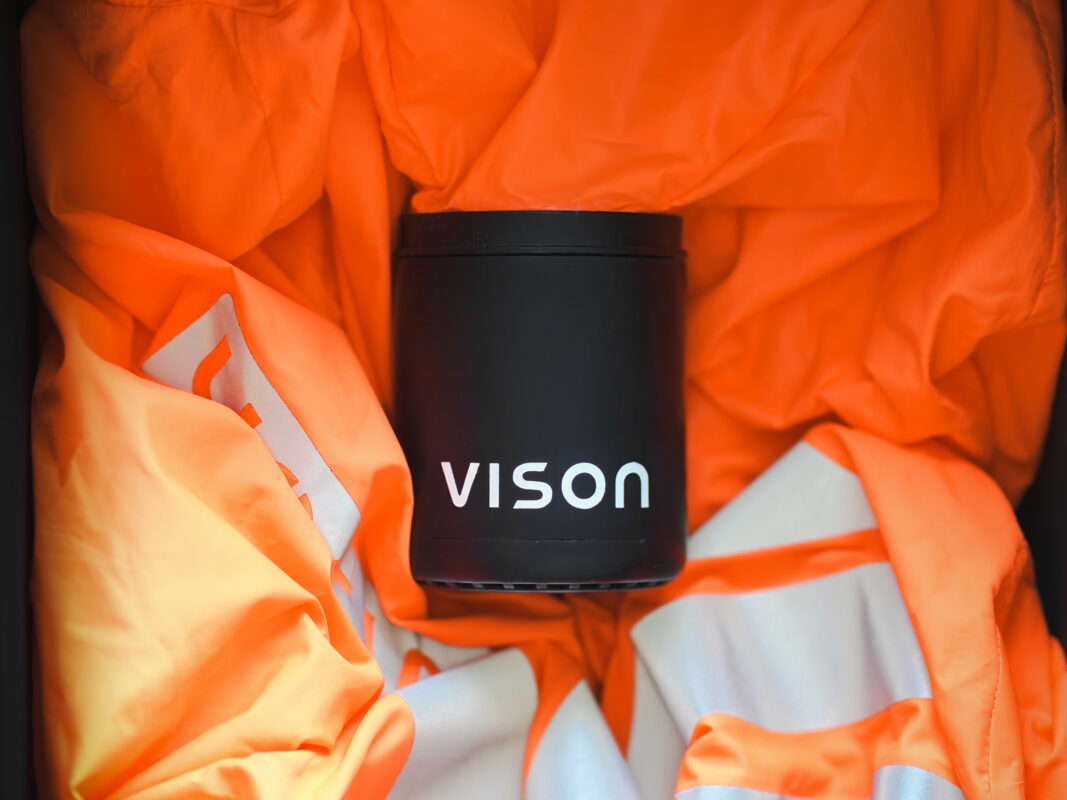
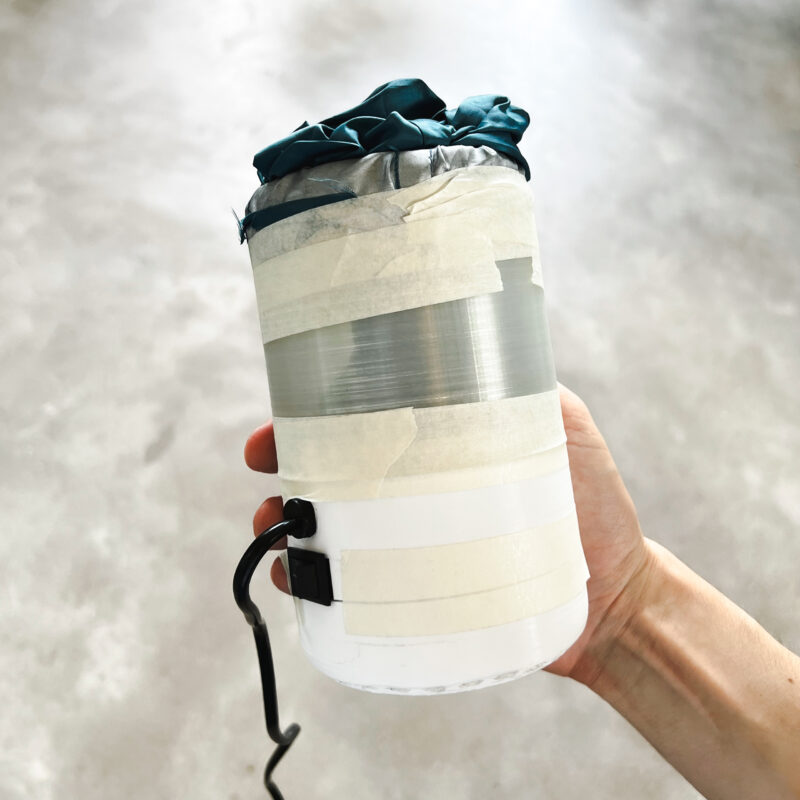
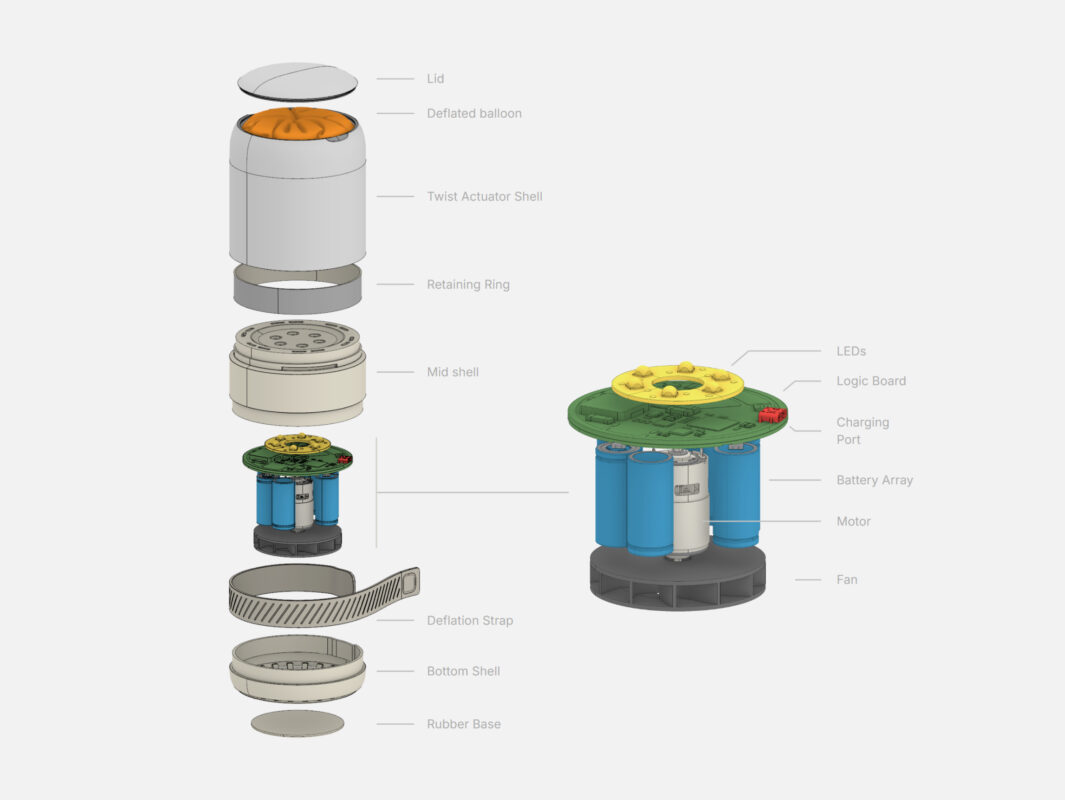
3. Visual language as engineering blueprint
With the problem defined and constraints understood, the next step was twofold: explore core functional principles and establish a strong design language to guide the product experience.
FLARE wouldn’t just be a technical solution, it needed to feel intentional, recognizable, and human. Defining its visual language early allowed us to anchor the engineering work in clarity and purpose. We set out to design something that communicated urgency and safety at a glance, while remaining compact, intuitive, and easy to deploy under stress.
Sketches, form studies, and material explorations helped translate those intentions into shape, color, and user feedback, laying the foundation for a cohesive system and user experience.
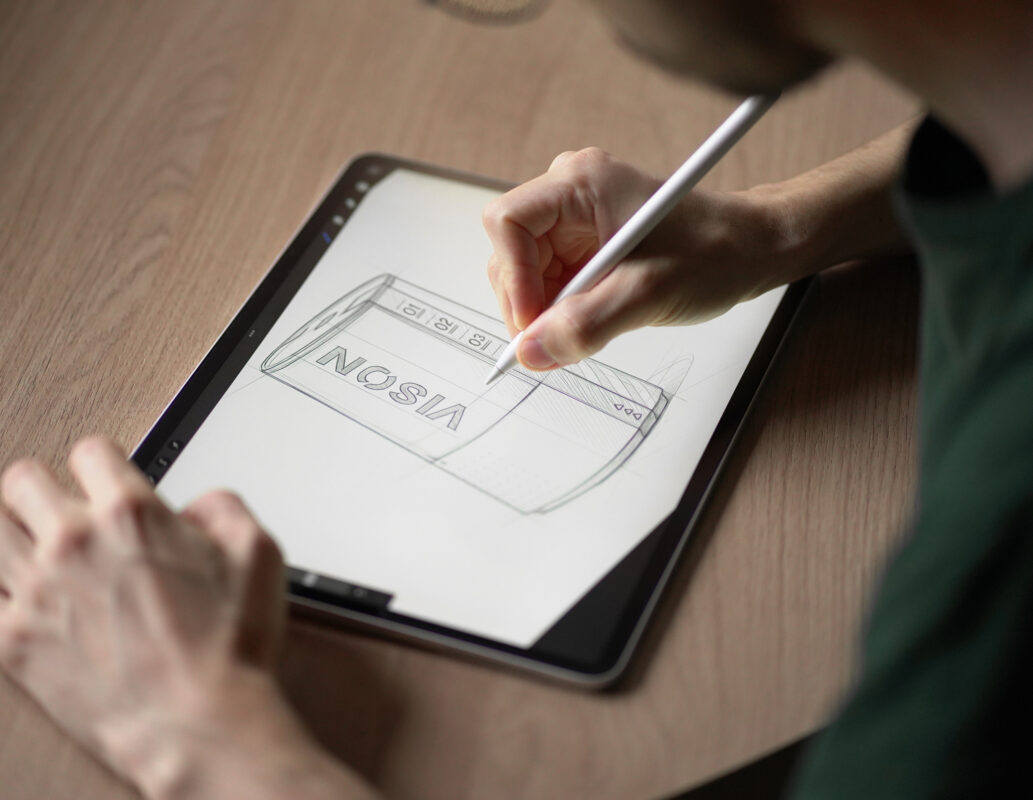
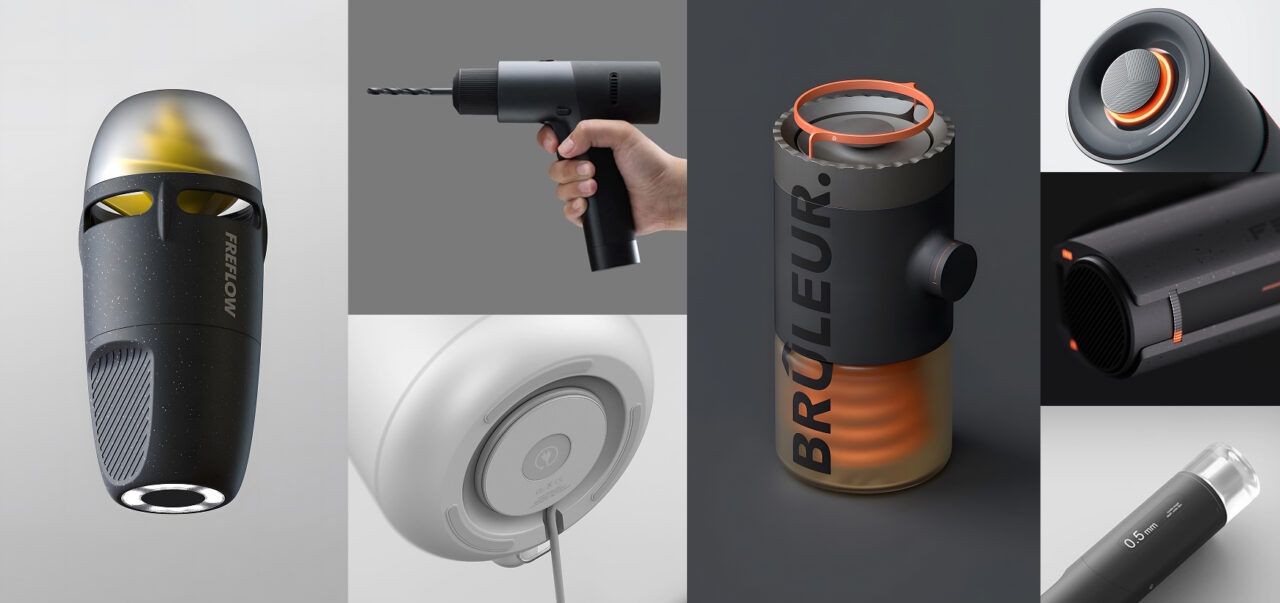
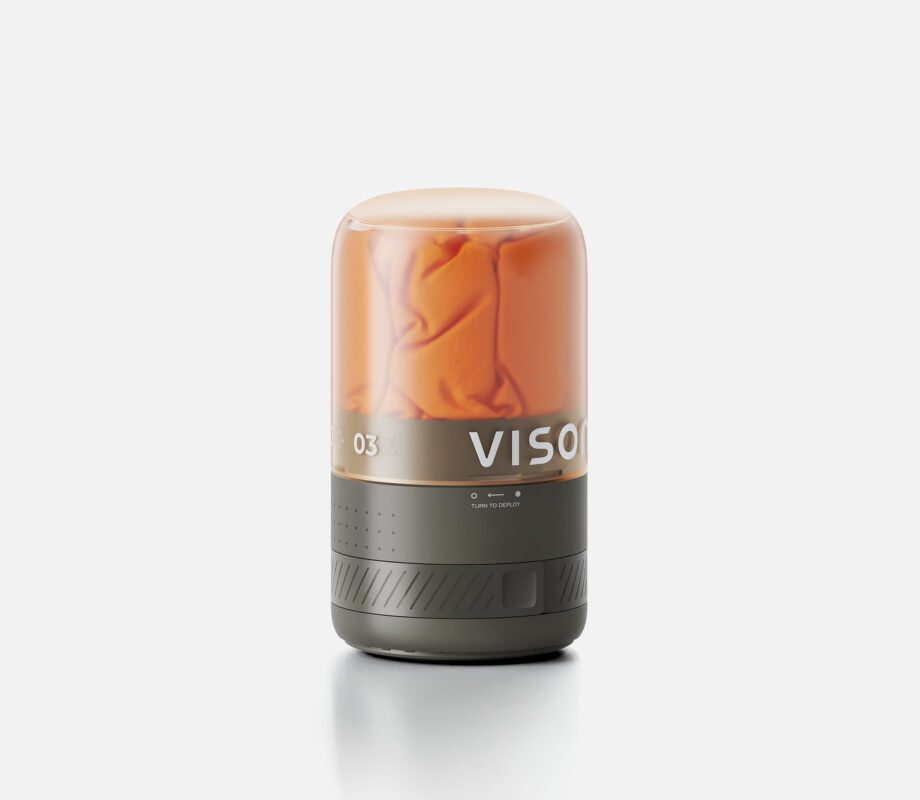
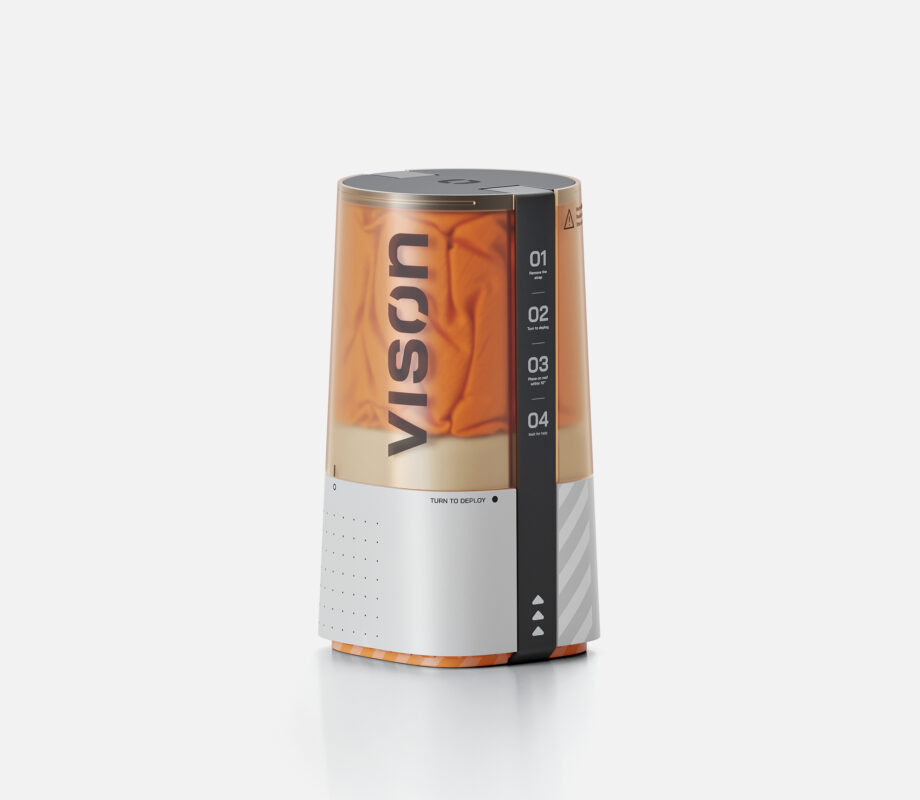
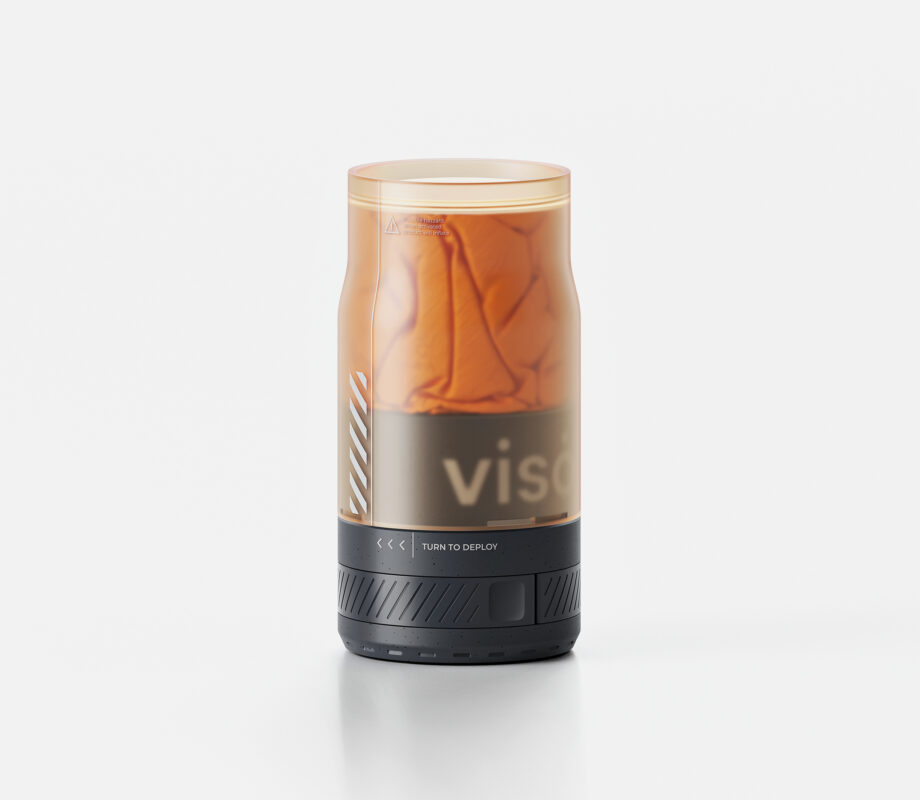
4. A system built from the inside out
Inflation & Deployment
FLARE’s core innovation lies in its inflatable element. Its shape is optimized to rise nearly a meter tall in just seconds. Compact in storage and intuitive to use, the system mounts magnetically to the roof and inflates at the press of a button on the remote. The result is a highly visible, elevated warning signal that can be deployed without ever leaving the vehicle.
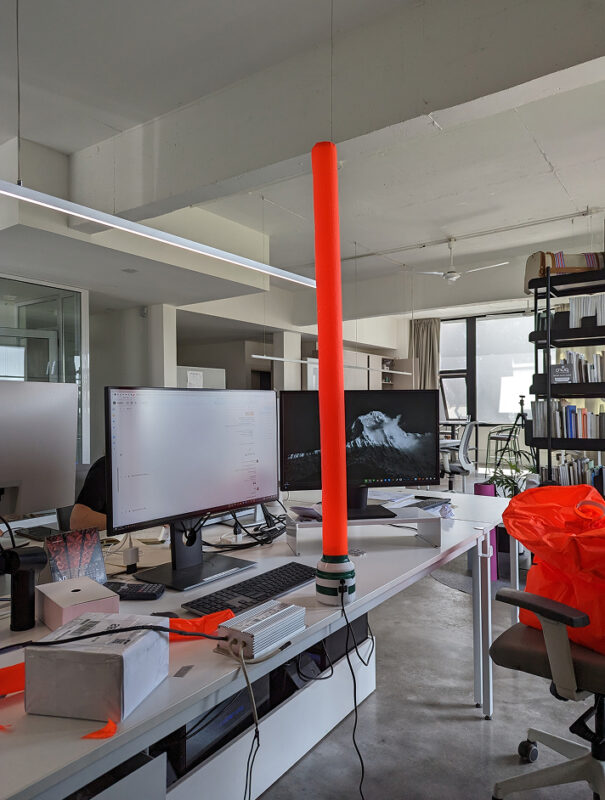
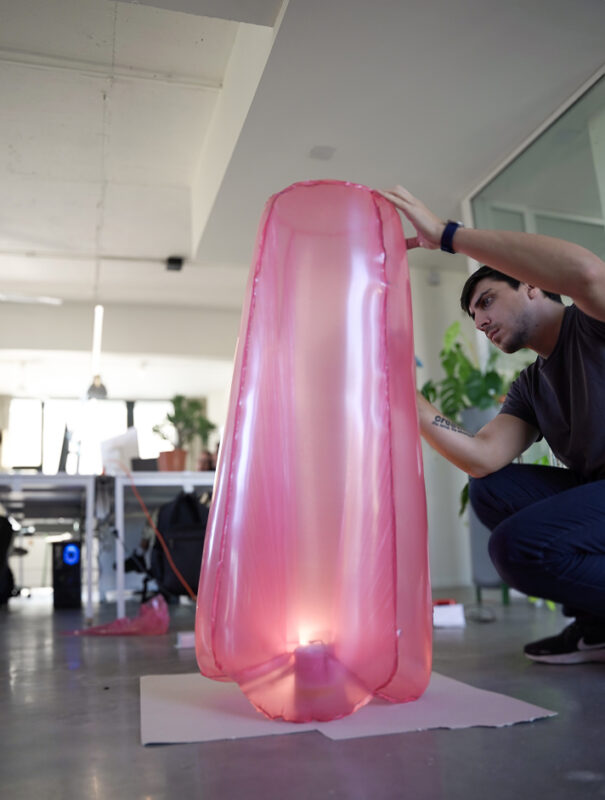
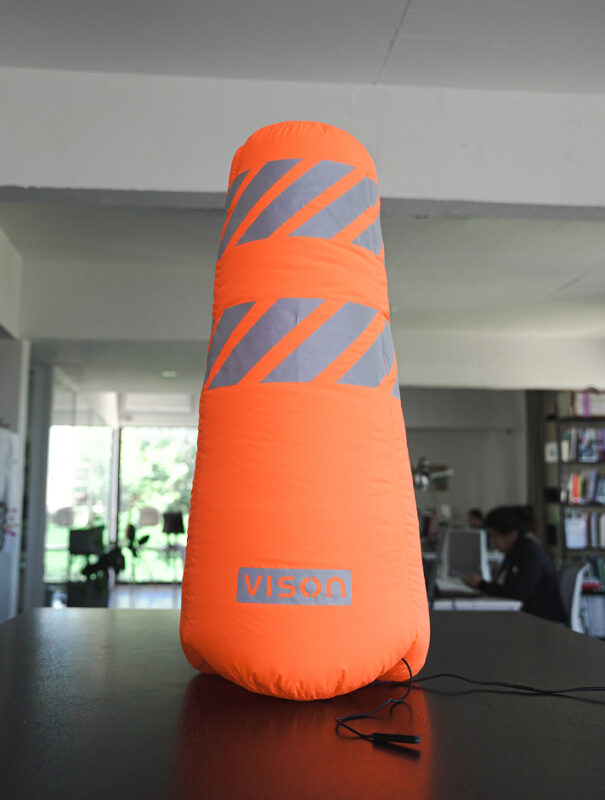
Power & Logic
Inside FLARE’s compact housing is a tightly engineered combination of power and control systems. A rechargeable lithium battery drives a compact, brushless blower that inflates the beacon rapidly. An onboard ESP32 controller manages LED flash patterns, monitors internal pressure, and coordinates precise system timing—ensuring consistent, reliable performance when it matters most.
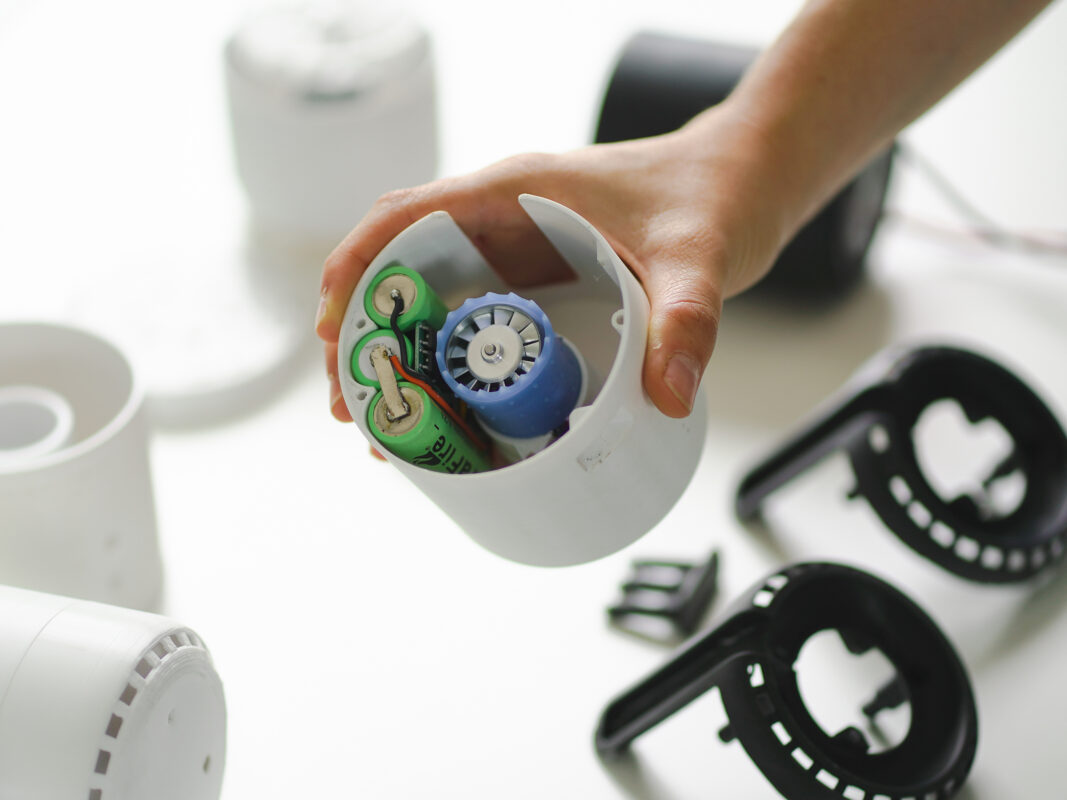
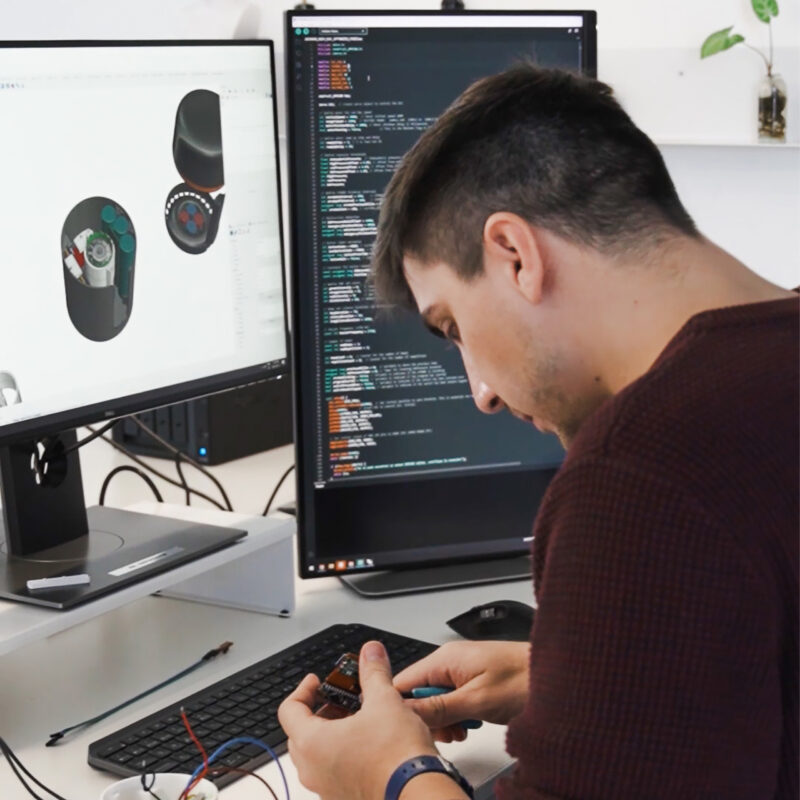
Materials & Testing
The inflatable needed to be both tough and collapsible. Early tests used thermosealed polyethylene, but eventually a TPU-coated fabric provided the right balance of strength, airtightness, and packability. We explored how different materials and seam geometries affected the shape and performance of the balloon. Soft body simulations, paired with iterative physical testing, were key in refining both form and function.
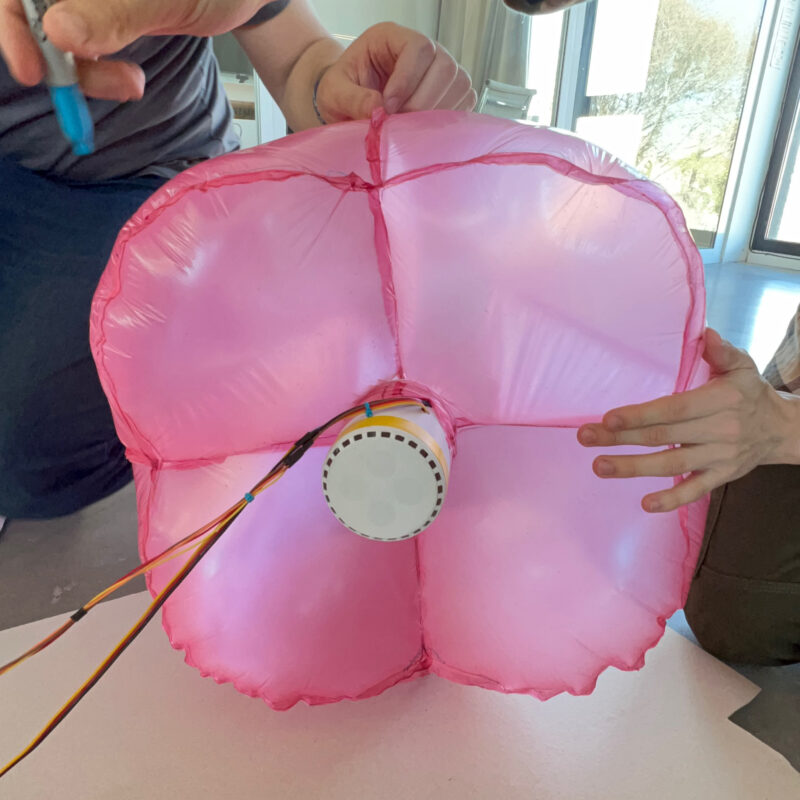
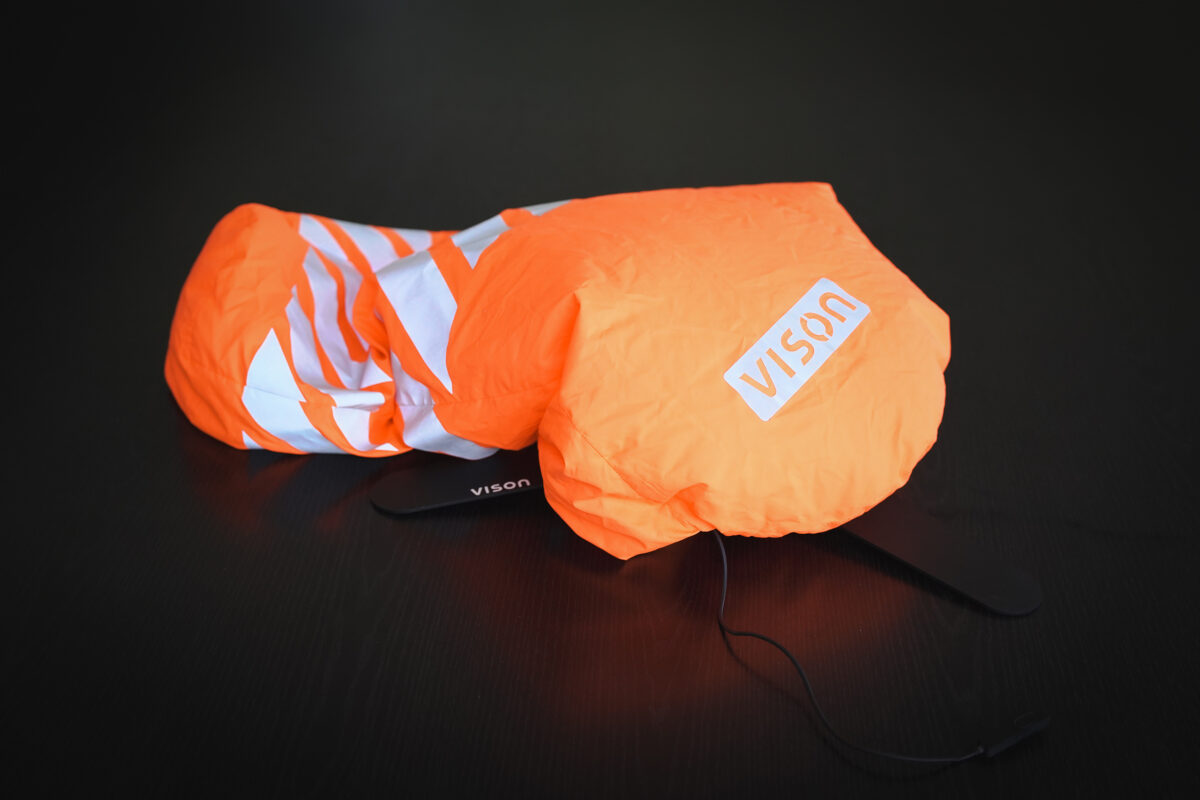
Compact Integration
All components were carefully integrated into a compact unit with a corded remote, allowing the user to activate the system from inside the car. A single button triggers both inflation and lighting in one intuitive motion. Strong magnets in the base ensure a secure attachment to the vehicle roof.
Achieving the compact footprint required tight coordination across all subsystems. Modular PCB layout, blower placement, cable routing, and structural elements had to be precisely balanced. Small changes in one area often triggered ripple effects across the entire design.
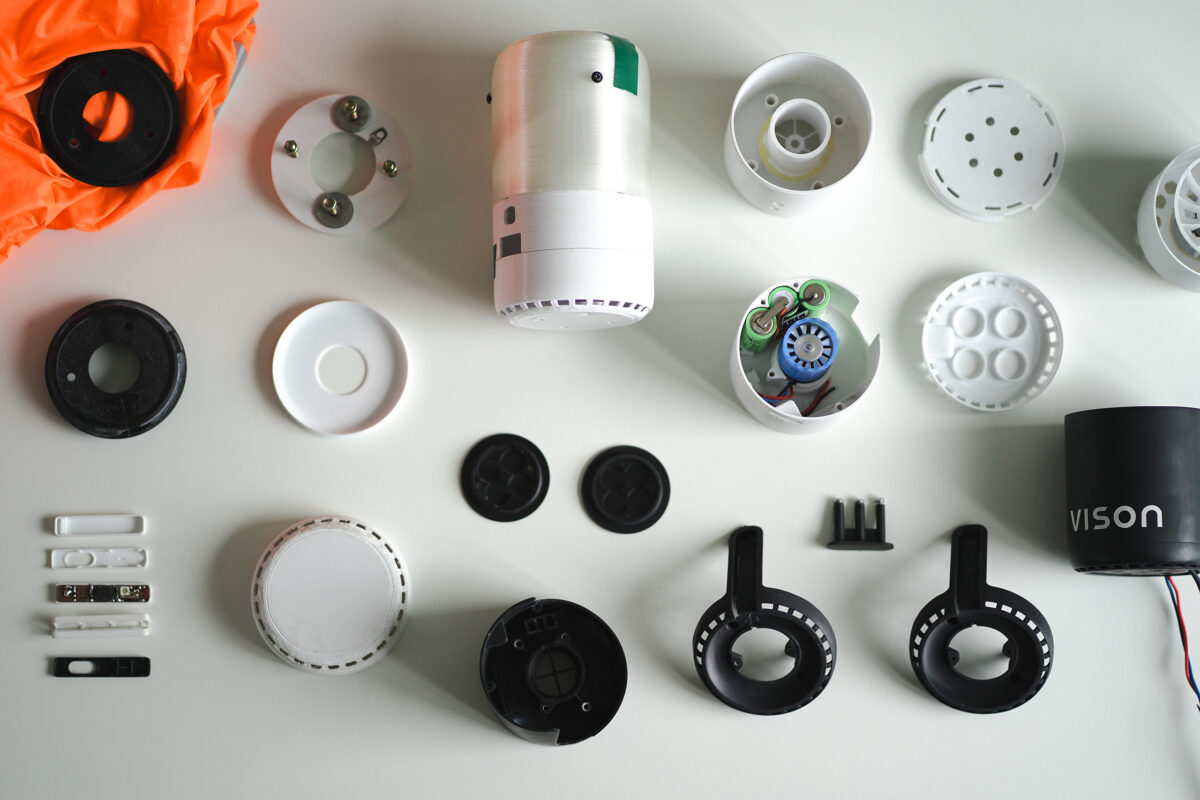
Final Assembly
The final result is a compact, detail-driven product, refined over multiple development cycles. Every element was tested and tuned to perform together under real-world stress. FLARE gives drivers a fast, reliable way to respond during roadside emergencies. Reducing personal risk and increasing overall road safety with clarity and confidence.
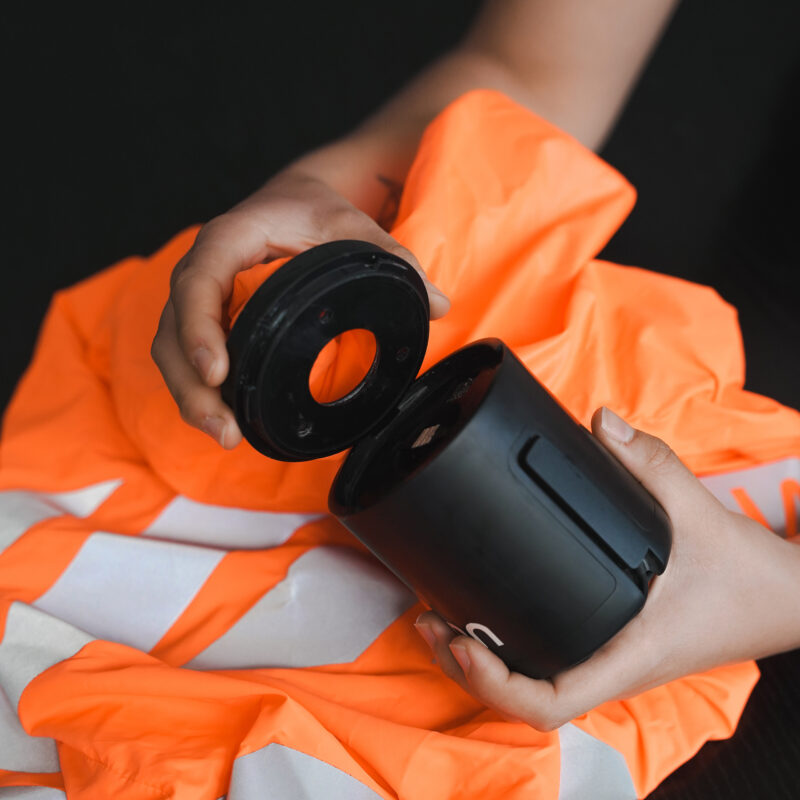
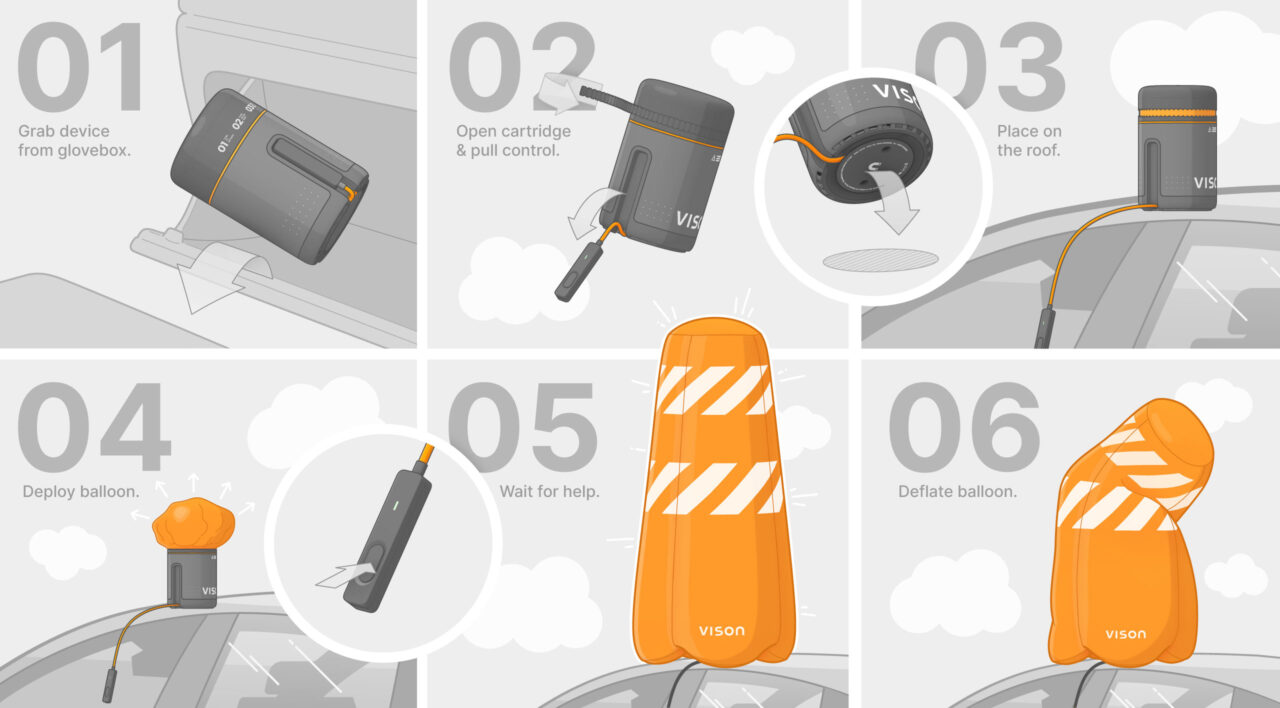
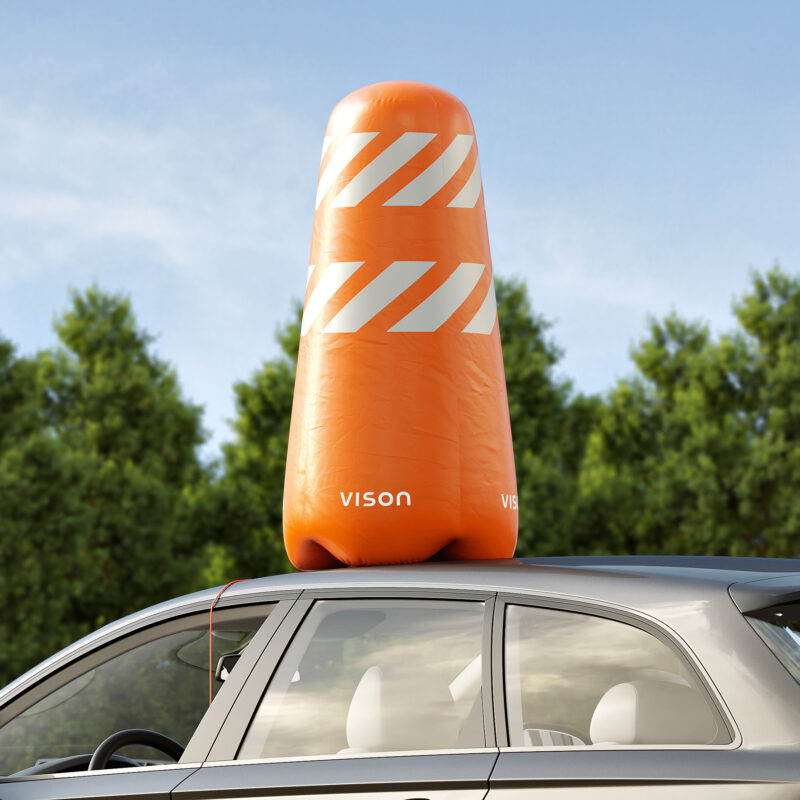
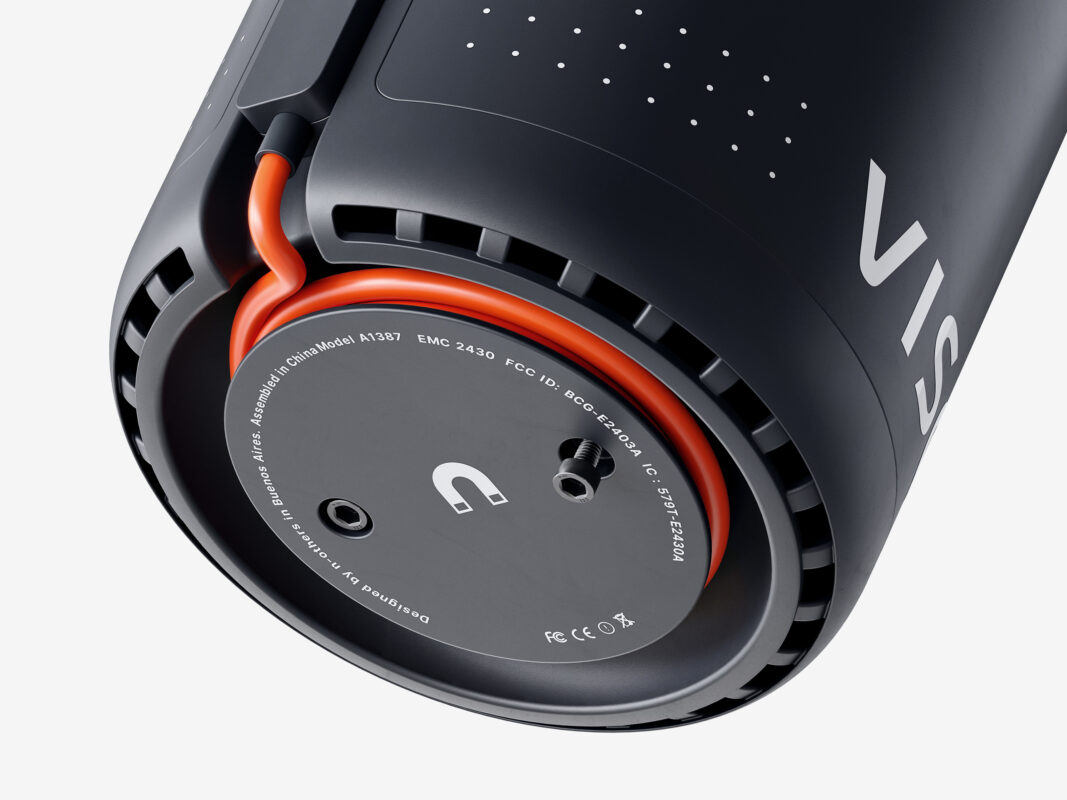
5. Expanding the toolkit
What began as a single-object concept quickly evolved into a more complete ecosystem. To extend FLARE’s impact, we developed a set of complementary tools—each reinforcing the same design language, usability standards, and emergency-use mindset.
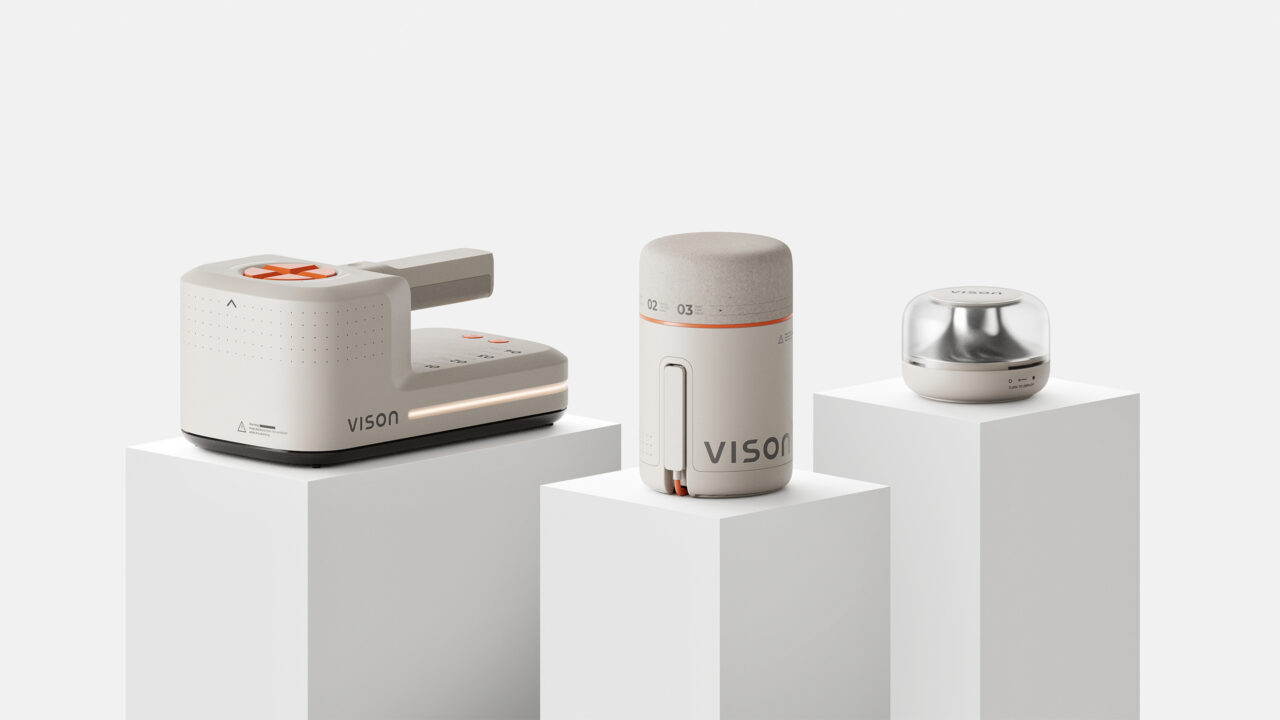
Magnetic Strobe Light
A compact, high-visibility beacon designed to work alongside FLARE or operate independently. It attaches magnetically to any metal surface and delivers 360º flashing visibility through high-intensity amber LEDs. Ideal for marking the vehicle’s rear, side, or surrounding hazards, it shares FLARE’s form language and materials to ensure a cohesive user experience.
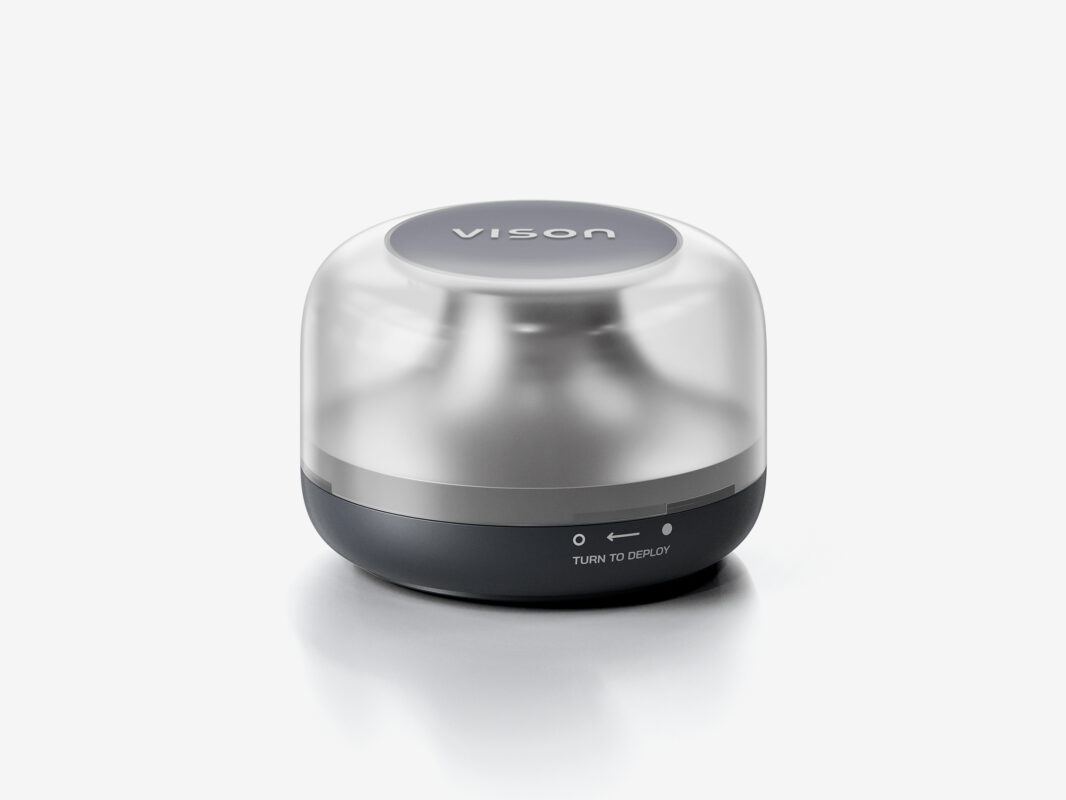
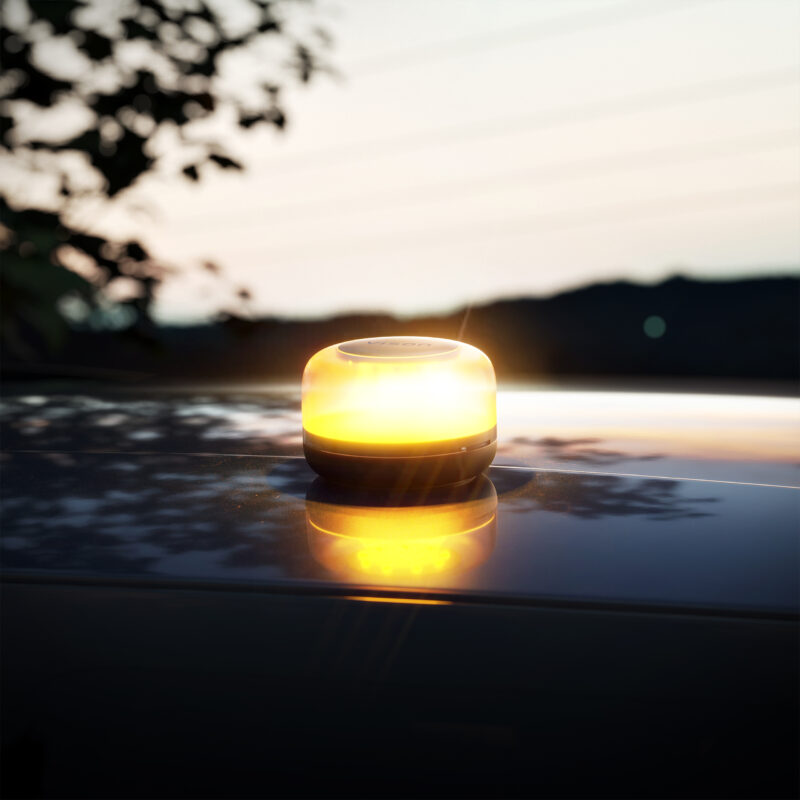
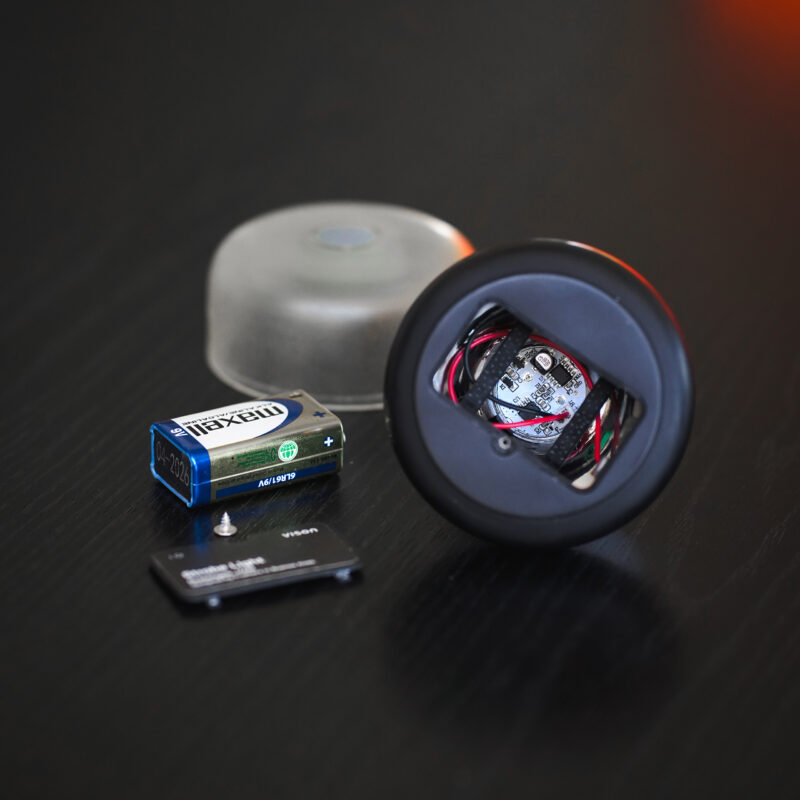
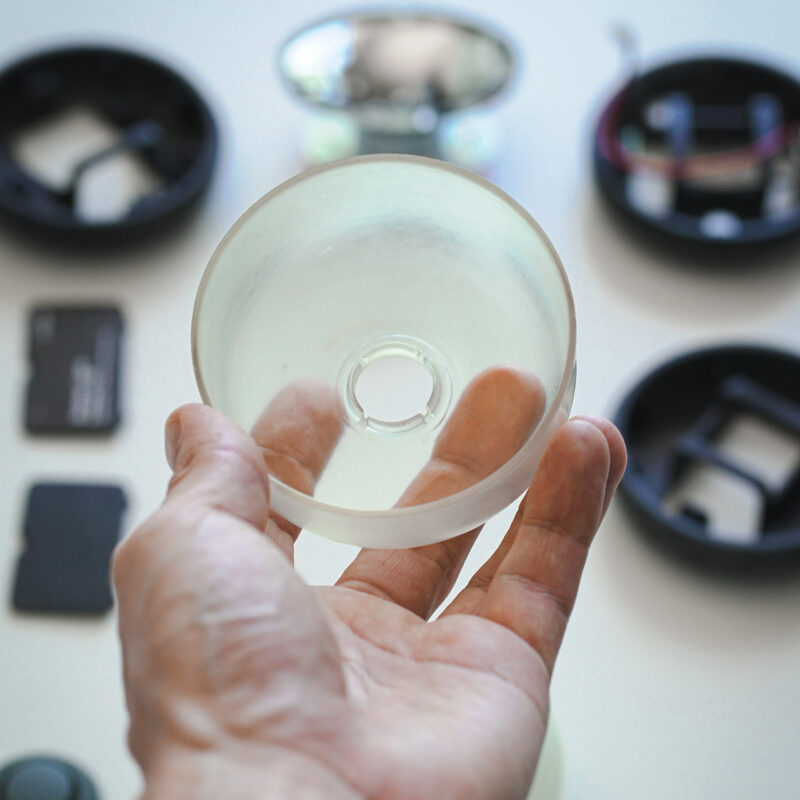
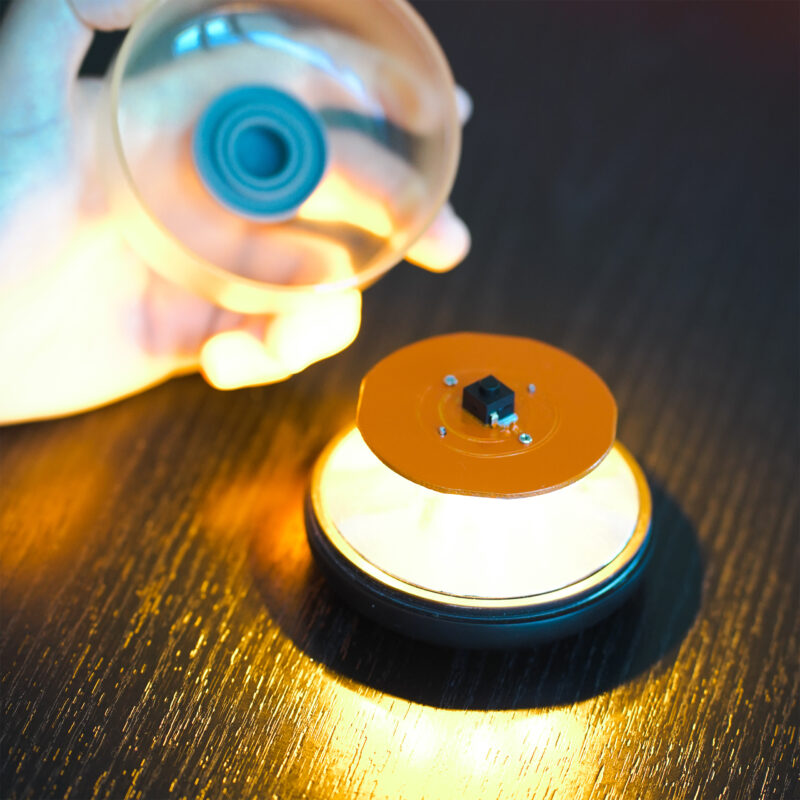
Electric Jack
A 12V-powered lifting tool built to replace the manual scissor jack. Compact in storage and easy to operate under stress, it lifts most cars and SUVs at the press of a button. Its design echoes the visual and structural language of the VISON system.
To support the jack, we developed a custom wrench with a wider foot surface and improved grip—making tire changes faster and more ergonomic in roadside conditions.
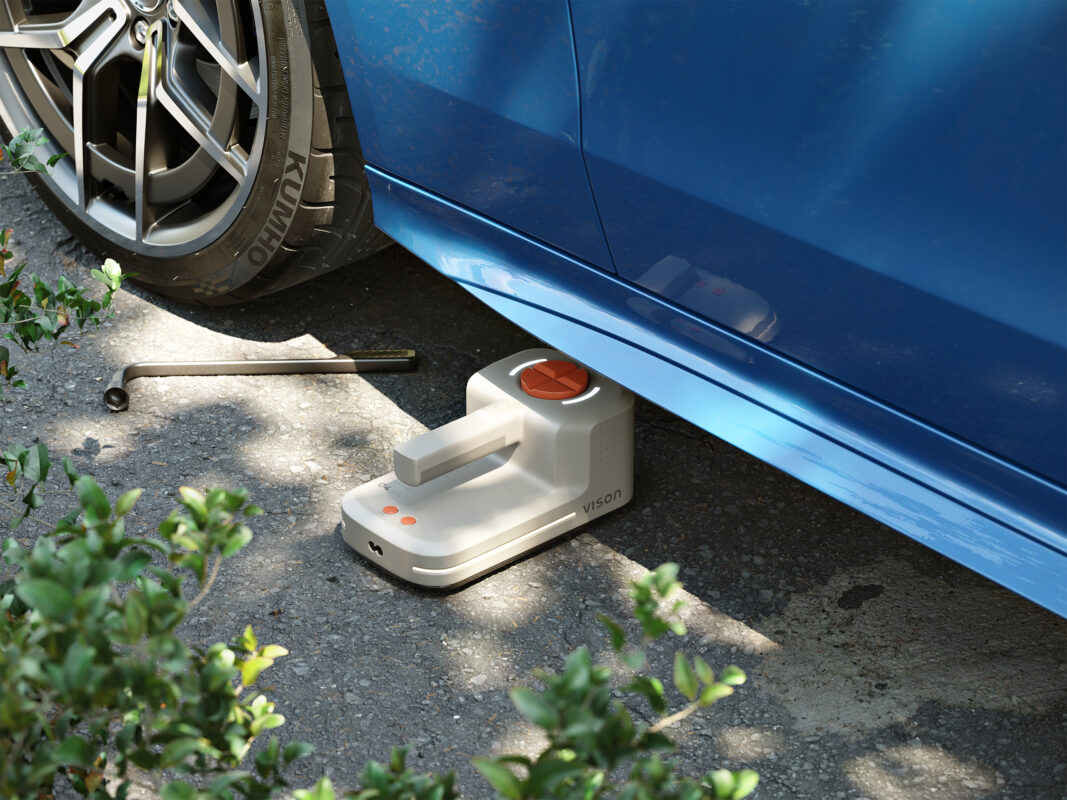
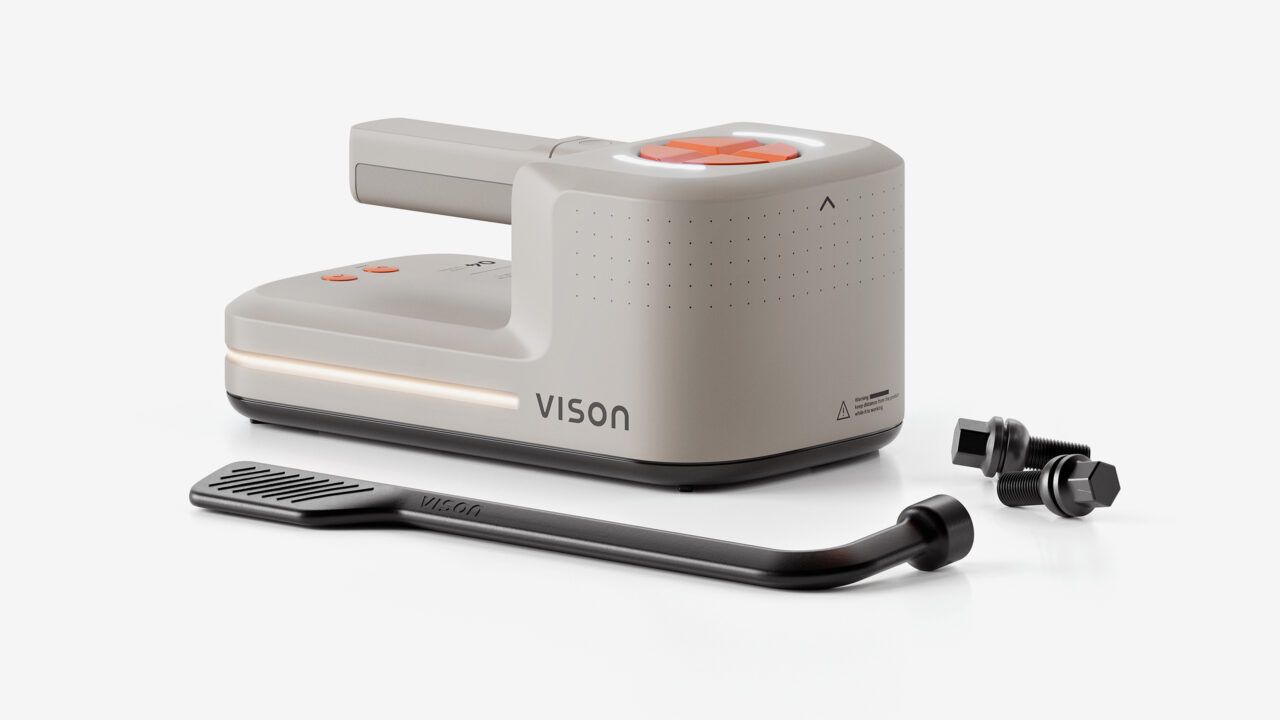
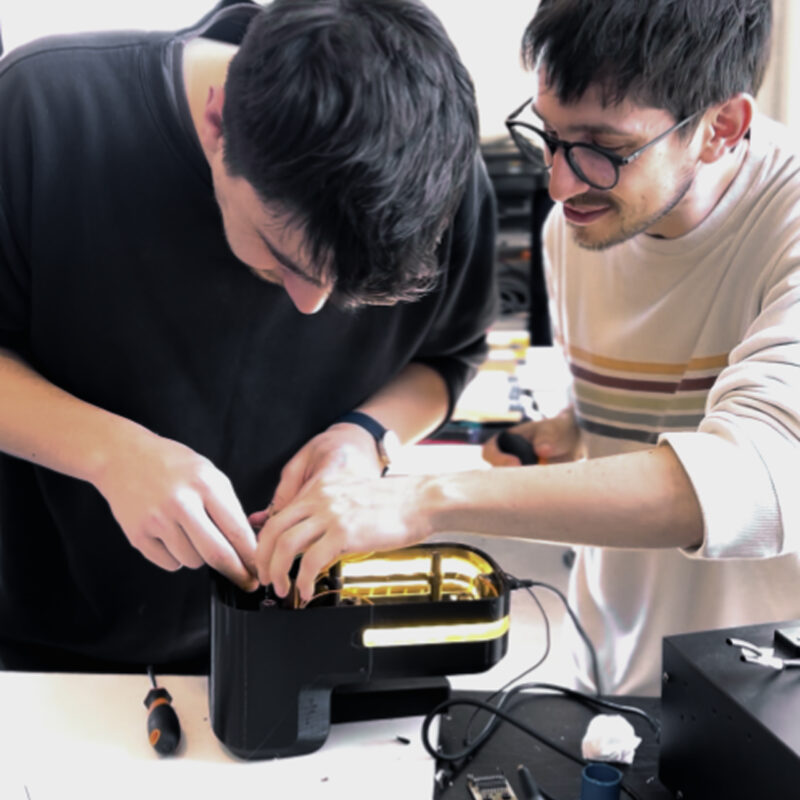
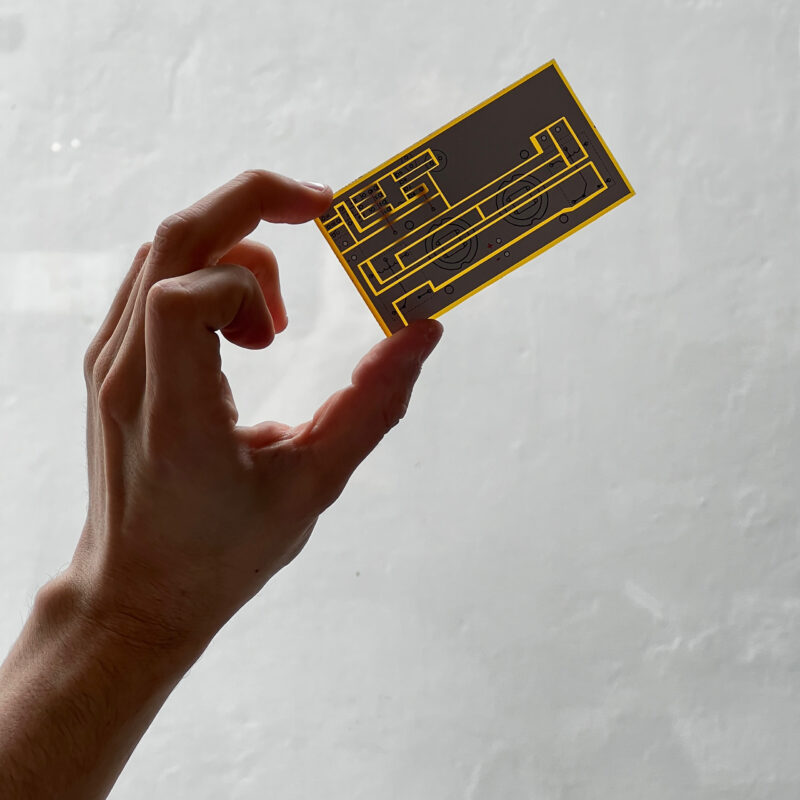
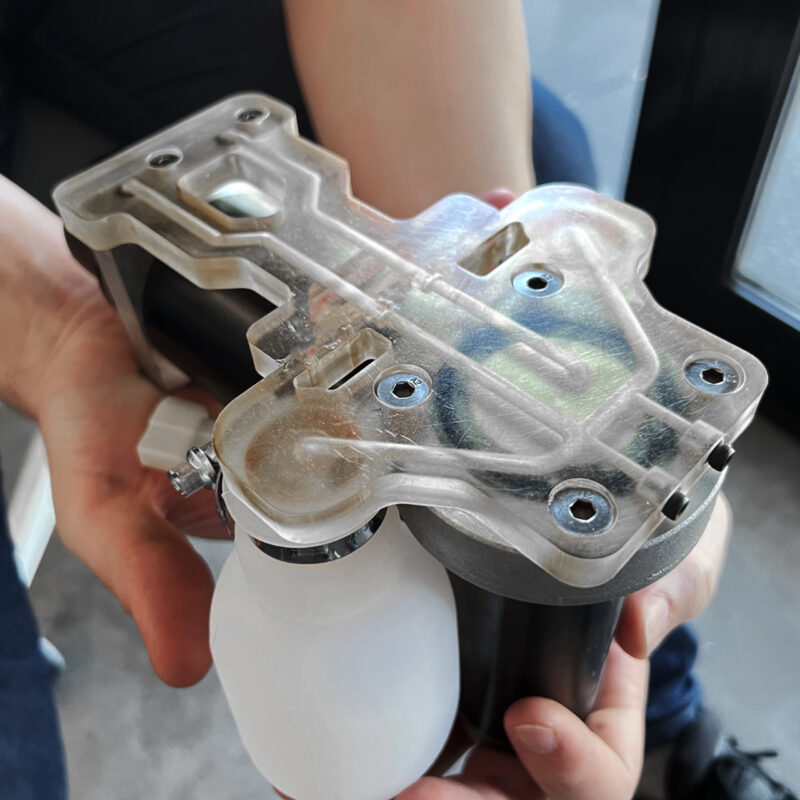
6. Integrating the service layer
VISON doesn’t stop at physical tools. As the ecosystem took shape, we explored how digital services could take the roadside experience even further.
Our interactive mockup envisions a mobile app that connects FLARE to a broader safety network. When activated, it shares GPS coordinates with assistance providers and updates live hazard maps automatically, improving response times and situational awareness without requiring user input.
While waiting, an AI agent checks in to assess the situation. It determines the type of help needed and provides reassuring communication to guide the user through the moment with clarity and calm.
Inspired by Spain’s upcoming V-16 regulation, this layer positions VISON as a forward-compatible platform, ready to connect with future safety infrastructure.
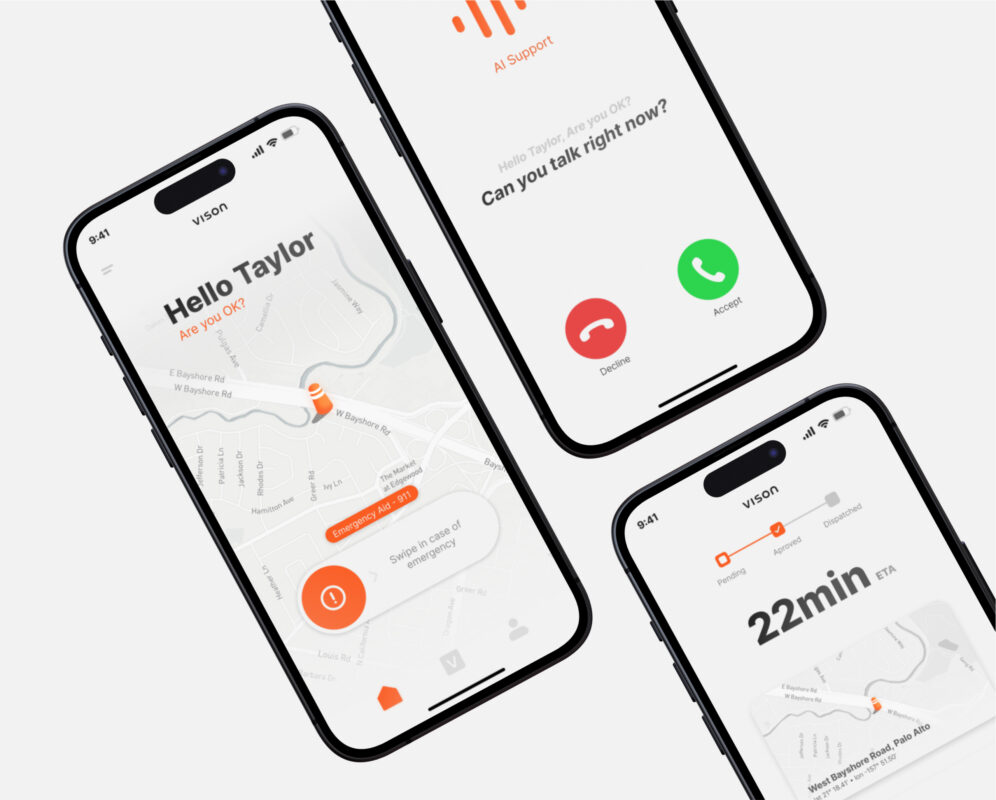
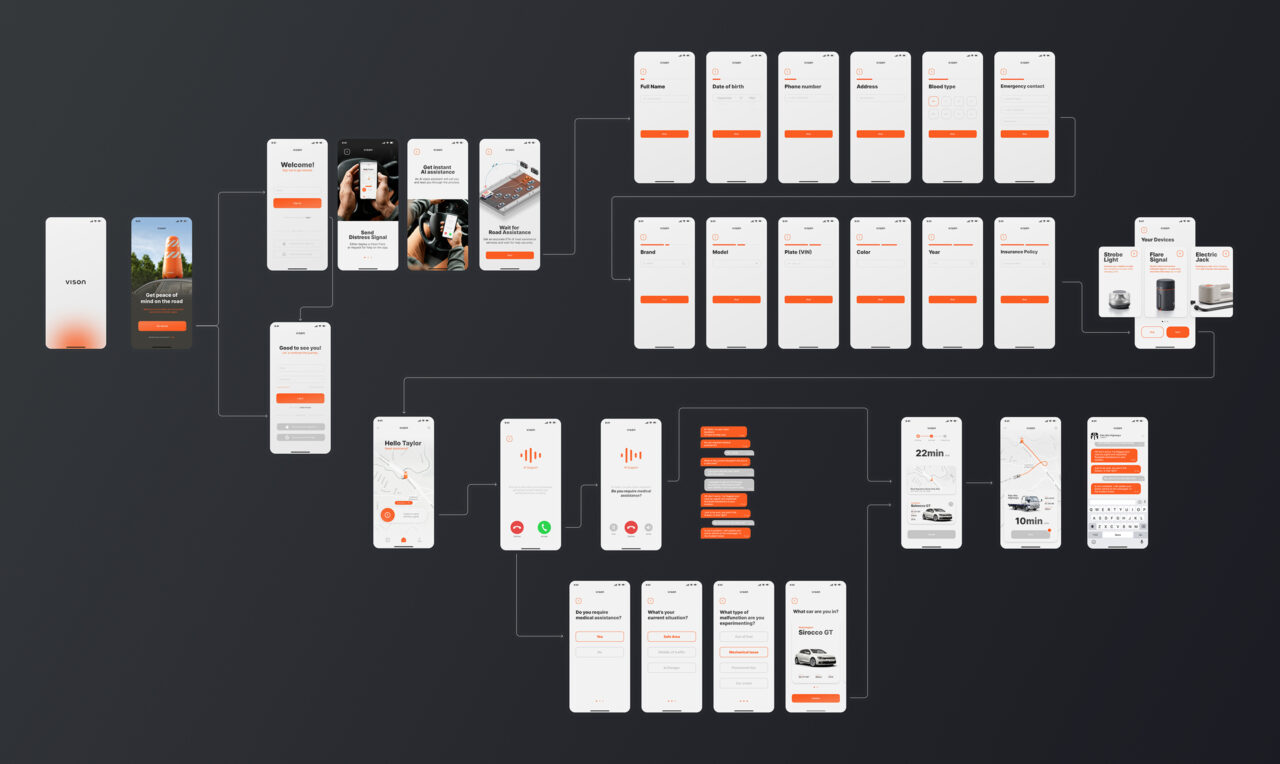
7. The road ahead
VISON is more than a concept—it’s a vision taking shape. With the core ecosystem defined, the next chapter begins: turning bold design into real-world impact.
The team is now focused on bringing VISON to life. That means refining every detail, securing strategic partners, and navigating the path from prototype to production. This phase is as demanding as the design work itself—aligning innovation with regulation, scaling manufacturing, and building the right alliances to launch at scale.
We believe the future of roadside safety will be shaped by tools that are smarter, faster, and built with intention. VISON is a step in that direction—not just a response to today’s gaps, but a foundation for tomorrow’s standards.
